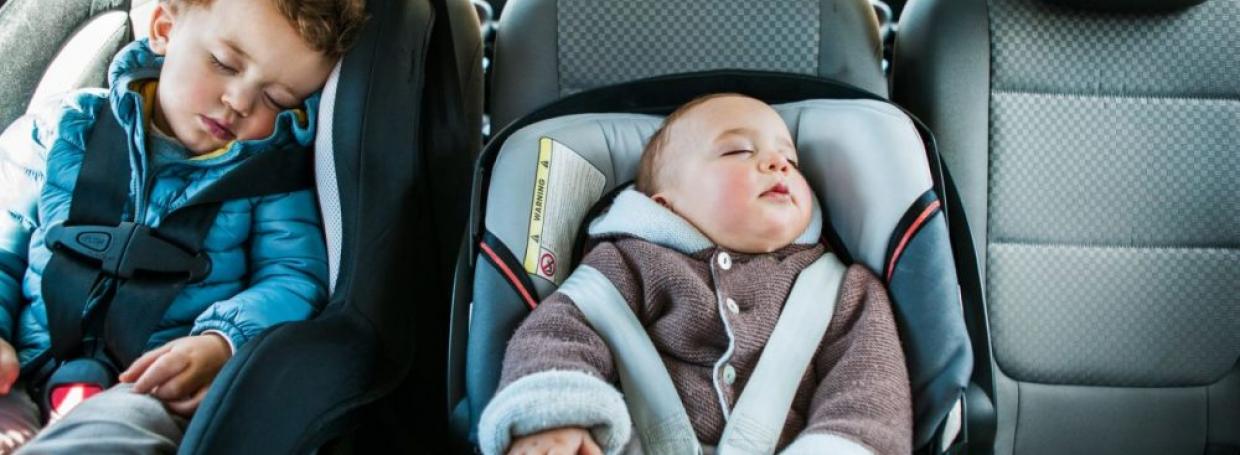Baby in Car - Current rules and how to have a safe ride

According to a Straits Times article, “only 6% of children are placed in proper restraint seats” here in Singapore. That’s a staggering 94% of children here who could be in unnecessary danger.
If you are a parent and would like to know what is considered safe practice in terms of having your baby in a car, read on for answers to some of the common questions parents may have:
Ques: Does a baby need a car seat?
Singapore's Road Traffic Act states that children under 1.35m tall are legally required to be in an approved and appropriate child restraint when travelling in a vehicle. However, this law does not currently extend to taxis.
Accordingly, taxis are exempted from the child restraint requirement as it is deemed impractical for public service vehicles to carry a number and variety of child seats of different sizes that are suitable for children of different ages.
Do note that if you use private-hire cars such as GrabCar or GoJek, the laws for private cars apply.
Ques: Can I carry my baby and sit in the front passenger seat?
Nope. Since legally the baby has to be in a proper car seat, you cannot be carrying the baby and be seated in front. In taxis, your child will have to be seated in the rear as well.
In the event of an accident, a child seated in the front passenger seat may be flung towards the windscreen. In accidents with a higher impact, the frontal airbags may be activated and could potentially cause death to a child due to the force.
Ques: What kind of car seats should I buy?
The car seats that you buy will have to be properly certified. The types of child restraint approved by Traffic Police need to meet one or more of the following standards approved by the Traffic Police:
- the American Standard FMVSS 213;
- the British Standards B.S. 3254: Part 2: 1988, B.S. AU 202a: 1988, or B.S. AU 185: 1983;
- the Australian Standard AS 1754-1975 (including AS 1754.1-1989 Part 1, AS 1754.2-1989 Part 2 and AS 1754.4-1989 Part 4);
- the European Standard ECE R44;
- the Japanese Standard JIS D0401-1990.
Thinking about whether you should get a front or rear-facing car seat? While parents may prefer a front-facing car seat so that they can have a view of their child, experts recommend that a rear-facing one is actually safer.
Ques: When do I need to upgrade my child from a car seat to a booster seat?
As children are of different height and size, the question of “when” has less to do with age. Most child car seats come with a weight limit, though they can usually seat a child till about 3 years old on average.
If your child has outgrown the car seat, it’s time to look out for a suitable booster seat so that the seat belt can be strapped across his body appropriately.
Ques: Should I baby wear in the car?
Babywearing is very popular these days and many parents are loving the convenience of babywearing. You might think that babywearing in a car is a safe alternative to having your child placed in a car seat, but that’s not true.
Why babies need a child car seat
Why do you need a seat belt? The answer is obvious - no vehicle is accident proof, even with built-in airbags. One can even get injured while being strapped in a seatbelt.
Babies and children are more susceptible to injuries when a collision happens. Thus, the child car seat is essential in keeping the child safe and secure during rides. Most parents make the mistake thinking that the child is safest in their arms, which is not.
Does car insurance cover your baby as a passenger?
Car insurance basically covers the damage to third parties in the event of an accident, and cover the damage to your own car if you have a comprehensive car insurance. So in that sense, the passengers in your car are considered “third party” and will be covered.
So for all you loving parents out there, invest in a child car seat and ensure they are properly buckled up for their next ride!
